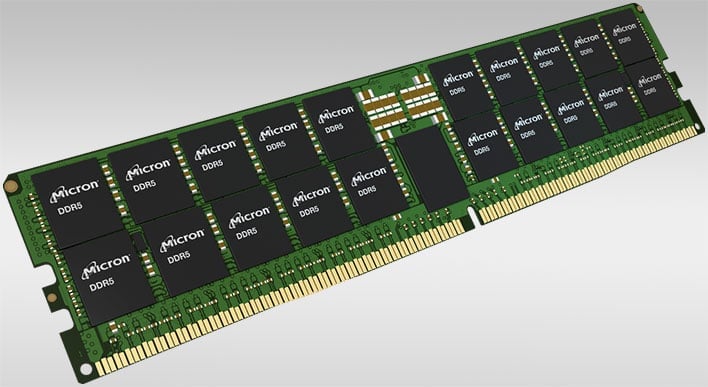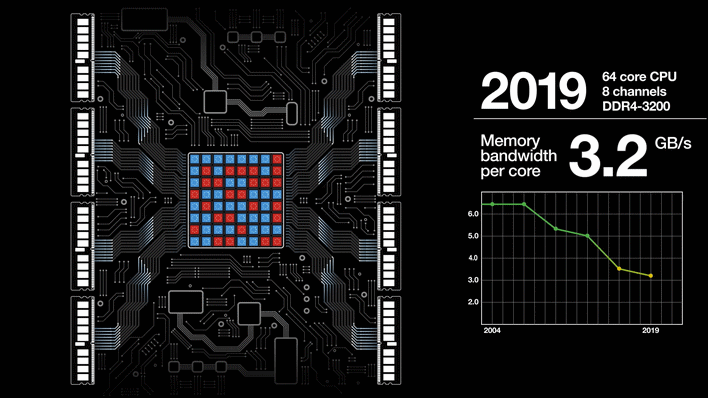Micron Starts Shipping Blistering 7200MT/S DDR5 Built On Cutting-Edge 1-Beta Tech

This announcement, by contrast, is for brand-new DDR5 DRAM ICs that come rated for 7200 MT/s by default. That's potentially a big deal for systems like workstations and servers that can't be running overclocked RAM. The bump from 4800 MT/s to 7200 MT/s is a 50% increase in bandwidth, as Micron points out. The company also says that it has improved performance-per-watt by 33% with the new RAM, which means it will draw more power than the company's previous memory ICs, but only slightly. Not bad considering the performance boost.
Samsung's been talking about a 7200 MT/s performance target for its DDR5 DRAM since 2021, but those parts don't seem to have materialized in its DDR5 IC catalog; the fastest packages we see there are 6400 MT/s. There's no doubt that Samsung's DDR5 can hit 7200 MT/s—Samsung ICs are commonly found in hot-clocked memory kits—but we believe that if Micron starts shipping ICs rated from the factory for 7200 MT/s, it will be the first to actually hit that milestone.

Increasing memory speed and capacity is critical right now as server systems face what's called the "memory wall." In recent years, the number of CPU cores available in a single socket has skyrocketed, all the way up to 128 cores with AMD's "Bergamo" EPYC CPUs. The thing is, the amount and speed of memory that can be installed alongside those sockets has not seen the same gains. Increasing the base transfer rate to 7200 MT/s will help tremendously in bandwidth-sensitive applications.
Micron says that this performance uplift was made possible by its 1β or "1-beta" process node. When we talk about semiconductor fabrication, we often focus on companies like TSMC, Intel, and Samsung who have leading fabrication processes for microprocessors, but there's a lot more ICs in use out there besides processors. Micron is still one of a few vendors out there focusing on memory fabrication, and its 1β process notably does not require expensive and complex EUV technology.
That'll come with its next step, 1γ or "1-gamma". That process isn't expected to start production until 2025, but Micron's already been making steps toward production on the new process in Taiwan and Japan. For now, the company's 1β products are already in the market and can be found on DIMMs, RDIMMs, MCRDIMMs, in mobile devices as LPDDR5X packages, in NVIDIA's GPUs with HBM3E, and eventually, in next-generation GPUs with GDDR7 RAM.

